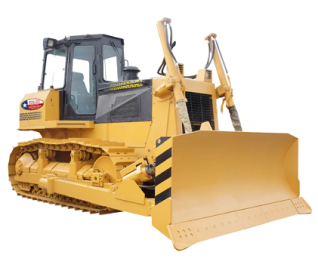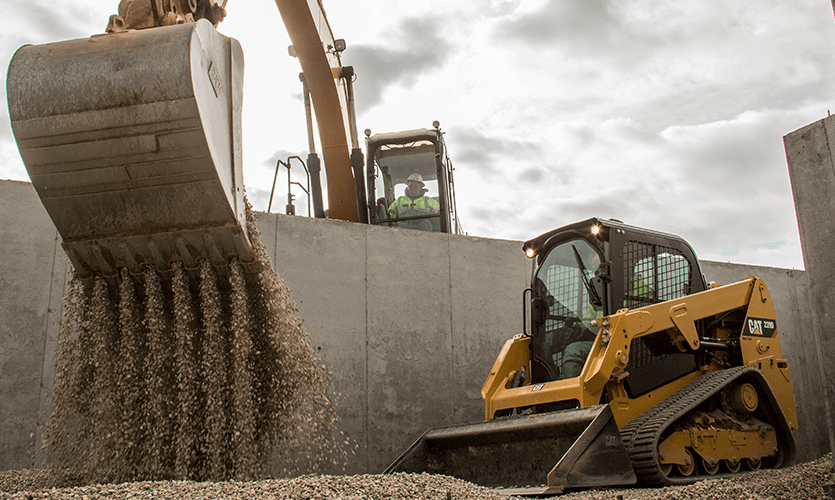Explore Our Equipment Rental Company for High-Quality Dozer Rental and Scissor Lift Rental Services
Explore Our Equipment Rental Company for High-Quality Dozer Rental and Scissor Lift Rental Services
Blog Article
Necessary Tips for Taking Care Of Hefty Equipment Rental Contracts and Logistics Effectively
Effectively taking care of heavy devices rental contracts and logistics is essential for the success of any project that relies on these resources. A thorough understanding of rental terms, combined with precise assessment of equipment requirements, lays the structure for favorable settlements. Furthermore, coordinating transportation logistics and preparing for recurring maintenance can considerably minimize unanticipated expenses and hold-ups. The intricacies of these aspects typically existing difficulties that need critical insight. What are the crucial factors to consider that can transform these prospective mistakes into opportunities for efficiency and cost-saving?
Understand Rental Terms
Understanding rental terms is important for effective hefty devices management. Knowledge with the particular regards to a rental arrangement can dramatically influence operational efficiency and cost-effectiveness. Key elements typically include rental duration, settlement structure, and upkeep duties. The rental duration defines the timeframe for which the equipment is rented, affecting budgeting and job timelines. Settlement structures commonly differ, encompassing daily, weekly, or regular monthly prices, which require specific calculations to prevent unanticipated expenses.
In addition, it is vital to understand the upkeep commitments described in the arrangement. Commonly, rental companies maintain the equipment, but comprehending that is in charge of routine checks and repair work is important to stop operational interruptions. Furthermore, terms might include conditions worrying responsibility for problems or burglary, which can have severe economic ramifications if not appropriately comprehended.

Assess Equipment Requirements
Analyzing devices requirements is an essential action for any task supervisor intending to maximize resource appropriation and enhance functional performance. This process includes a complete evaluation of the job requirements, including certain jobs, timelines, and the kind of tools needed to attain wanted outcomes.
Begin by recognizing the range of the project and the tasks that will be carried out. Take into consideration factors such as the terrain, the scale of procedures, and any kind of potential challenges that could influence devices selection. Involving with staff member that will certainly operate the equipment can provide important insights into sensible requirements and preferences.

Following, review the capacity and capacities of readily available tools alternatives. It is important to match the right equipment to the jobs at hand, guaranteeing that it can deal with the expected work without endangering security or performance.
In addition, consider the rental duration and regularity of use. Understanding these elements can help identify whether buying or leasing is one of the most economical service. By performing a detailed analysis of tools demands, task supervisors can make informed decisions that result in enhanced productivity and minimized operational prices.
Negotiate Successfully
Once the equipment demands are plainly identified, the following step involves reliable settlement with rental firms to protect positive terms. A well-prepared arrangement approach is vital for accomplishing the finest possible bargain. Begin by investigating numerous rental business to understand their prices frameworks, inventory accessibility, and online reputation. This understanding will certainly empower you during settlements and help you establish practical expectations.
When coming close to the arrangement table, be clear about your demands, consisting of the kind of devices, rental period, and any kind of additional services you may require. This openness allows rental business to give tailored remedies that can fulfill your details needs (construction equipment rentals). Do not wait to request for discount rates, especially for long-lasting services or mass orders, as lots of business are prepared to use concessions to secure larger contracts
Additionally, consider bargaining terms connected to maintenance, insurance coverage, and small construction equipment for sale near me shipment costs. These elements can substantially affect the overall expense and must be explicitly outlined in the rental arrangement. Lastly, make certain that all agreed-upon terms are recorded in writing to protect against misconceptions and secure your passions throughout the rental duration. Efficient arrangement not just causes cost savings yet additionally establishes a favorable relationship with the rental business.
Coordinate Transport Logistics
Coordinating transport logistics is a crucial facet of managing hefty equipment rental contracts. Reliable transportation makes certain that tools is delivered promptly and in optimum problem, thereby reducing downtime and boosting job performance. To accomplish this, it is crucial to develop an extensive logistics intend that describes the whole transport procedure from pick-up to distribution.
Begin by examining the certain transport needs based upon the type and size of the devices involved - construction equipment rentals. Engage with trustworthy transport carriers that concentrate on heavy equipment to guarantee they have the essential competence and devices, such as flatbed trucks or specialized trailers. Talk about elements such as web weight limitations, path limitations, and called for permits to stay clear of unanticipated delays
In addition, maintain open interaction with both the rental firm and the transportation company to work with timetables properly. Verify all information, including pickup and drop-off times, to ensure every person is straightened and prepared. Develop backup plans to resolve any type of potential disturbances, such as negative weather or website traffic conditions, which may affect the transport timeline. By thoroughly coordinating transport logistics, you can copyright the honesty of your rental contract and facilitate smooth job execution.
Strategy for Maintenance and Assistance

In addition, it is crucial to interact directly with the rental company relating to maintenance obligations. Some contracts may include upkeep as component of the rental solution, while in various other situations, the onus might drop on the occupant. Comprehending these terms will help stay clear of unanticipated prices and responsibilities.
Additionally, having access to technical support can be invaluable. Make sure that the rental firm supplies 24/7 support or an emergency contact, permitting quick resolution of any devices problems. Training your group on proper tools usage and routine checks can additionally dramatically boost operational efficiency.
Verdict
To conclude, effective management of hefty equipment rental arrangements and logistics rest on a comprehensive understanding of rental terms, precise analysis of devices demands, and proficient negotiation abilities. Coordinating transport logistics and planning for upkeep further enhance functional performance. By carrying out these techniques, organizations can minimize risks, control expenses, and make sure that jobs proceed smoothly and within well-known timelines. Emphasizing clear communication with all stakeholders continues to be important in browsing the complexities of devices service and logistics management.
Properly managing hefty devices rental arrangements and logistics is crucial for the success of any job that relies on these resources. By completely assessing and comprehending these rental terms, businesses can make informed choices, mitigate risks, and ensure that their heavy devices administration lines up with project goals and monetary restrictions.Working with transport logistics is a crucial element of handling heavy equipment rental agreements.In conclusion, reliable administration of hefty equipment rental agreements and logistics joints on a complete understanding of rental site terms, specific evaluation of equipment demands, and adept arrangement abilities. Highlighting clear communication with all stakeholders remains vital in navigating the complexities of tools leasing and logistics monitoring.
Report this page